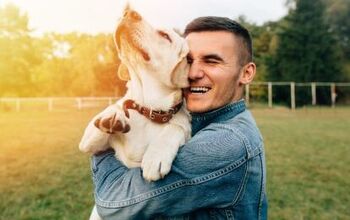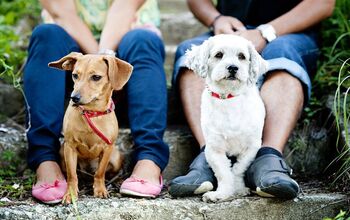Anxiety in Dogs: Studies Show How Common It Is

Dogs experience a range of emotions, but researchers have found that anxiety, in particular, is surprisingly prevalent among canine companions.
A Finnish Study on Canine Anxiety
In 2020, a study of 13,715 dogs in Finland honed in on several anxiety-related traits:
- Noise sensitivity
- Fear
- Fear of surfaces and heights
- Impulsivity/inattention
- Compulsive behavior
- Aggression
- Separation related behavior
Using an online questionnaire given to pet parents of mixed breed and purebred dogs, researchers concluded that 72.5% of the dogs exhibited a behavior related to the traits above.
The researchers also discovered that noise sensitivity topped the list of anxiety-related traits – 32% of dogs were scared of at least one noise. Fearfulness came in second, with 29% of dogs exhibiting it.
Aggression and separation related behavior were the least common anxiety traits among the dogs involved in the study.
Differences Based on Breed, Gender, and Age
Other fascinating results showed that a dog’s breed, gender, and age might affect their anxiety level and behavior. For example, the Lagotto Romagnolo and Wheaten Terrier were among the breeds that were most sensitive to noise, while Spanish Water Dogs and Shetland Sheepdogs commonly showed fear.
Also, while females showed more fearfulness, males were more hyperactive/impulsive and aggressive, and males showed some more separation related behaviors compared to females, too.
With age, behaviors may change as well. While behaviors like inattention and hyperactivity/impulsivity were more common in younger dogs, noise sensitivity, aggression, and fear of heights and surfaces became increasingly apparent in older dogs.
Although there are some interesting differences, the results also show that, regardless of breed, age, or gender, anxiety and the behaviors that result from it are surprisingly common in dogs.
Increased Anxiety in Dogs Post-COVID
Yet another study – this time conducted by a CBD company called Green Element – found that pet anxiety increased from 2020 to 2022. In other words, since the COVID-19 pandemic, some pet parents have found that their dogs are even more uneasy.
In May 2022, Green Element conducted a survey involving 1,000 dog and cat owners in the United States.
Results showed that fear of loud noise was no longer the leading cause of canine anxiety; instead, fear of strangers, which increased by 295%, topped the list. Also, separation anxiety in dogs increased by over 700%. And anxiety caused by other dogs or cats went up as well.
Is Your Dog Anxious?
If you’re like a lot of pet parents, you might be noticing some behaviors that indicate your canine friend feels distressed, on edge, or fearful. Learn about the common signs of anxiety in dogs so you can recognize them more easily, and consider your companion’s breed and age. With more knowledge, and the help of your veterinarian or a dog behaviorist, you’ll be able to take steps to reduce your dog’s anxiety and behavioral problems.

Lisa Selvaggio is a freelance writer and editor, and our resident cats-pert, with certifications in pet nutrition and pet first aid. She enjoys producing content that helps people understand animals better so they can give their pets a safe and happy home.
More by Lisa Selvaggio























